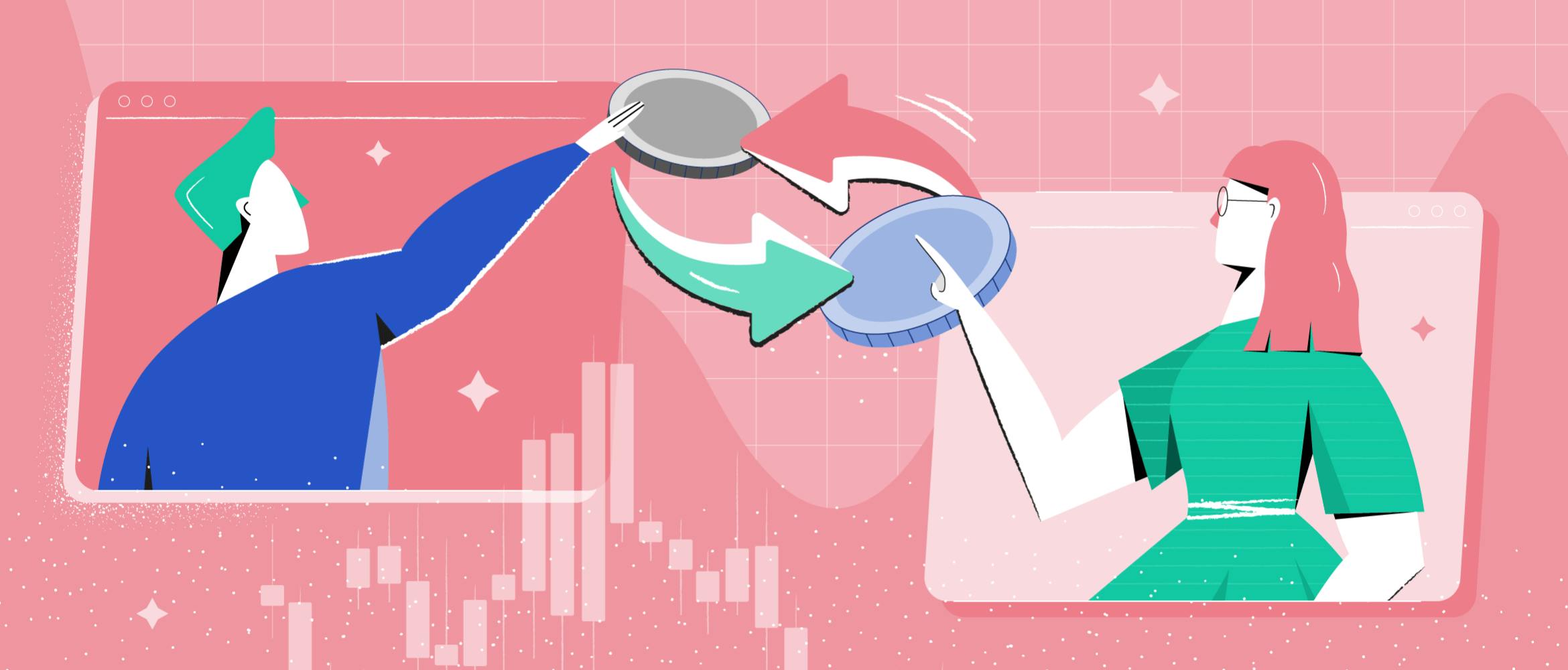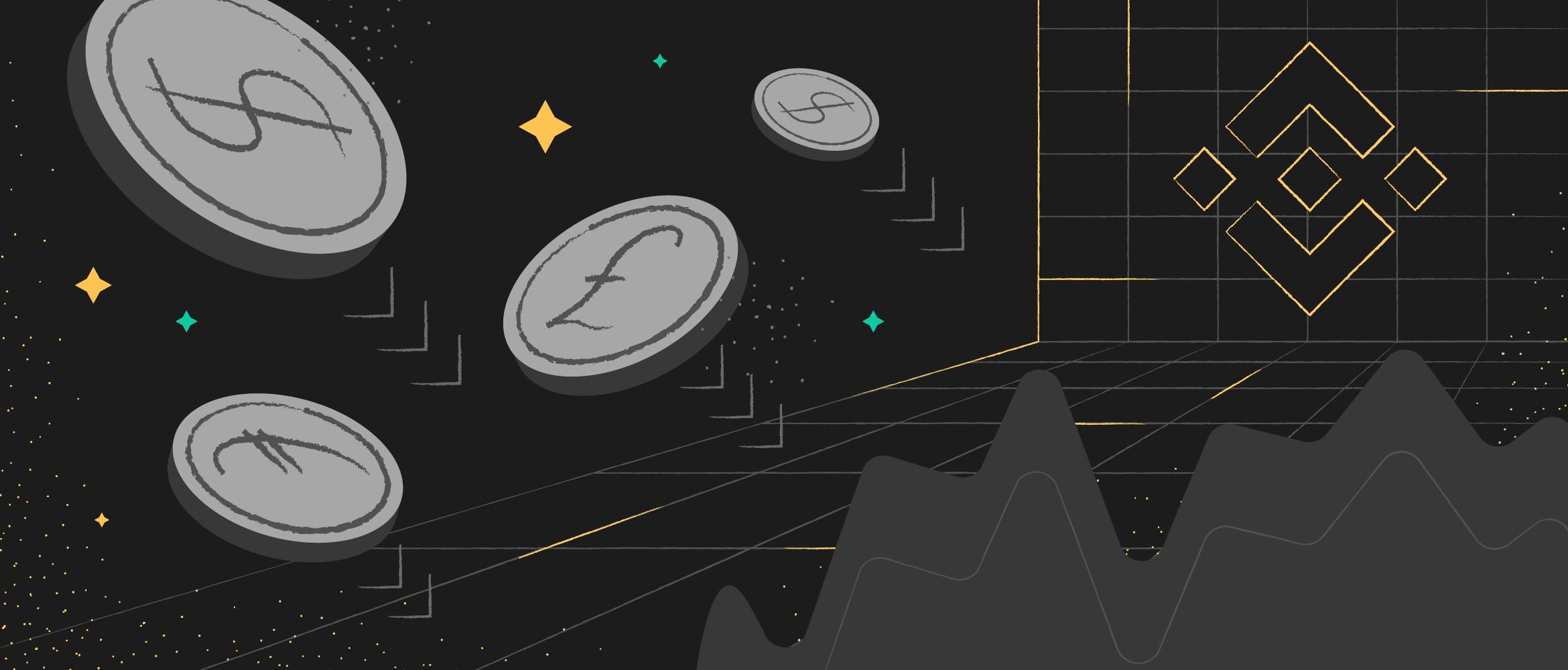
- All
- Tools
- Analytics
- Technical Analysis
- Trading
- Blockchain
- DeFi
- Guides
- Company News
- Educational
- Opinion
- Price Predictions
- Market News
- News
- Trading cases
- Practical guides
- Exchanges
- Trading signals
- Cryptocurrency
- Crypto bots
- Other
Become a crypto master
Learn everything about crypto,
trading and bots

Popular 2025 Algo Trading Strategies
Whether you’re just getting started with algo trading or have already taken your first steps, implementing popular strategies may boost your trading results. In this article, let’s discuss popular algo strategies that may level up your crypto trading.
Start Trading on 3Commas Today
Get full access to all 3Commas trading tools with free trial period

Market-making strategies
Market making is the practice of providing liquidity to the market by manipulating it for both purchasing and selling an asset at the same time. As a private trader, you can benefit from this strategy by capturing the bid-ask spread.
How does market making work?
In 2025, when you're keen on acquiring a financial asset, like popular cryptocurrencies Bitcoin or Ethereum, the journey typically starts at an exchange. This is the digital marketplace where prospective buyers and sellers converge.
Traditional centralized cryptocurrency exchanges rely heavily on an order book combined with an order matching system to facilitate trades.
So, what's an order book? It's a continuously updated electronic ledger that catalogs and showcases all active purchase or sale requests for Bitcoin, exhibiting the varying price points in real-time.
The order matching system, on the other hand, is a sophisticated software mechanism designed to cross-reference and process orders listed in the order book.
Occasionally, a hurdle might arise: you might find that you're unable to execute your intended trade on an exchange. This usually points to a liquidity issue. Liquidity, in this scenario, pertains to the ease and speed with which an asset can be traded without causing significant price fluctuations as a result. An illiquid market suggests a dearth of either assets or active traders, making it tough to conduct a trade without notably swaying the asset's value on that exchange.
To assure consistent liquidity, centralized exchanges often join hands with seasoned trading entities. These could range from banks and brokerage firms to a myriad other financial institutions. Their primary role? Ensuring there's a continuous flow of buy and sell offers at diverse price points. This ensures that participants always find a counterparty for their trades. This crucial act of ensuring an exchange has adequate liquidity is termed "market making." And the entities at the helm of this indispensable service? They're renowned as market makers.
Market making in practice
Imagine a clothing market where shirts are sold, for example. A vendor at the market is selling shirts for $15 each, but you are not willing to pay more than $10 for the product. In this situation, the chances are that you and the seller will never agree on a price, resulting in a deal that will not happen, leaving you with your money and the seller with his shirts.
According to the market-making laws of this clothing market, only the market maker (MM) has permission to trade shirts within this clothing market: no one else can trade. In this case, you and the shirt seller must both notify the MM of your intent to buy and sell. The MM will inform you that the best current price to acquire the shirt is $14, and the best price to sell it is $12. If both parties agree to the terms, the market maker will buy the shirt for $12 from the trader and sell it to you for $14. As brokerage income, he'll keep the difference, or the $2 spread.
Thus, if you select quotations successfully, you can buy low and sell high, regardless of the current trend direction. There are many ways to catch a trend, for example, methods based on an asset’s liquidity, the volume of funds allocated, the optimal time to keep a position, etc.
The main disadvantage of the strategy is that trading has gained high speed due to computers: machines compete in market making not with people, but with competitors' machines. For example, сomputers are very good at placing limit orders and immediately canceling them in a split second, reacting to the slightest change in market conditions. They can do it with great speed, without getting tired, and without a break for coffee. The market maker’s system must react to events that occur with great density and frequency. The trading system, in turn, reacts to these events with high frequency, hence the name of the trading style: high-frequency trading (HFT).
Market making is one of the most popular HFT strategies. Event, statistical, and index arbitrage are other styles of HFT. Some traders also include news-based trading in HFT.
What does market making mean for a private trader?
Traditionally, the market maker (MM) is the financial institution that enters into a special agreement with the exchange. These include central banks (influencing the market with financial interventions and interest rates), commercial banks (constantly converting vast volumes of currencies), hedge funds, multinational corporations, big brokers, and private and corporate players—basically anyone with sufficient capital and technical ability to influence the market seriously.
You can see their relative influence in the picture below.
The MM formulates (quotes) the market price (make price), then requests the purchase price (take price) and, if he is satisfied with it, closes the deal. As a participant in exchange trading, the MM is always present on both sides of the market, both as a buyer and as a seller.
Commercial companies (proprietary trading) and hedge funds carry out market making. They invest a lot of money to get rid of the main obstacle, called latency. The system has to go through massive market data and data on changes in the limit orders book. Any delay in processing the data flow will cause losses, incorrectly placed orders, and inaccurate future price forecasts.
Everything that money can buy is used to facilitate the process: the fastest processors, memory, and storage. High-speed patches for operating system kernels, network cards with FPGA, switches, network cables, and colocation are actively used, so as to connect as quickly as possible to the exchange engine and the source of market data. And, of course, the best people are hired: programmers and technologists who are able to get the most speed out of the code and hardware are very highly valued in this business.
Thus, a market-making strategy is unlikely to fit your trading style if you don’t have massive capital. For instance, to become a certified NYSE (New York Stock Exchange) market maker, you need at least $100,000.
Pair trading strategies
In pair trading, positions are opened simultaneously for two instruments: currency pairs, cryptocurrencies, stocks, futures, and others. The main selection criterion is the correlation between the assets. The correlation can be direct or reverse (positive or negative):
- In direct correlation, instruments move in the same direction, almost copying each other.
- In reverse correlation, instruments move in different directions.
The main objective of pair trading is to create a market-neutral portfolio so that the growth of one asset will compensate for a drop in another. To do that, you need to distribute funds among the instruments in the portfolio.
Pair trading in practice
Pair trading is based on related assets that have the same dependencies or basis, for example:
- the price of Bitcoin and the value of stock in the Binance cryptocurrency exchange;
- the price of stock in companies such as Coca-Cola and Pepsi, or Domino’s Pizza and Papa John’s Pizza;
- the price of oil and the value of oil company stocks.
When the price of a particular commodity falls, the value of the stocks tied to it may fall disproportionately: e.g., when the price of Bitcoin falls, for some reason the stock price of Binance (or any other crypto exchange) may rise in the short term. This phenomenon is the basis for the pair trading strategy.
Imagine two companies that have side-by-side stock prices. However, at some moments, both of the prices fluctuate. Assuming that the balance may be restored shortly, you can simultaneously short sell the overvalued asset and buy the cheaper one. The main risk is that the balance may not be restored. Otherwise, you either make a profit or lose almost nothing.
The strategy is referred to as "neutral" due to the fact that the general market condition doesn’t affect gains and losses. You place a short trade on one of the linked assets and a long position on the other. Even in the face of highly adverse market conditions, this technique allows you to offset long-term losses with short-term profits, and vice versa.
To establish a strong correlation between assets, you can use technical analysis indicators, for example, the property of price convergence for short-term pairs. On the other hand, there are fundamental analysis indicators, such as market multipliers, profitability ratios, and financial ratios. Signals on such indicators occur relatively rarely, which allows you to invest a sufficiently large amount of capital via the strategy.
However, it’s not advisable to invest a great deal of money right away, as there is an unreasonable risk of losing money and destabilizing the market. You can combine pair trading with special algorithms for step-by-step order execution:
- Time-weighted average price (TWAP). The principle of this algorithm is to divide the order into equal parts and put the sub-orders on the market evenly, taking into account the current favorable price. The TWAP algorithm is very predictable. Its work is visible in the market, so sometimes, randomness is added to it so that other market participants don’t speculate on the trade.
- Volume-weighted average price (VWAP). This is a more advanced algorithm than TWAP. It breaks up the order into smaller ones and considers the trading volume by time of day. This algorithm uses historical data to estimate the possible profit.
- Percentage of volume (POV). This algorithm considers the average price for a particular day. Due to this algorithm, the trader has a constant percentage of participation during the selected time interval.
- Iceberg. The name of this algorithm describes how it works: when Iceberg is used, only part of the order is visible to market participants; the rest is hidden. Bids are placed until the entire bid is closed.
Basket trading strategies
In basket trading, equal portions of the deposit are allocated to different assets. The basket's holding time might range from a week to several months, depending on your preferences. This approach is based on the idea of buying and selling assets at the end of the investment term. As a consequence, the benefits of successful transactions outweigh the disadvantages of unsuccessful ones.
Basket trading utilizes several assets to create one synthetic instrument, thus making it possible to meet an investor’s requirements to the fullest extent.
Synthetic instruments are investment instruments developed artificially to satisfy needs that are not met by existing conventional instruments. You can merge several instruments to produce synthetic instruments with the desired characteristics.
Basket trading in practice
The easiest way to use basket trading is to buy a stake in an ETF fund or an index like the S&P 500 (stocks) or Crypto-10 (cryptocurrencies). The latter comprises Bitcoin (BTC), Ethereum (ETH), Polkadot, Binance Coin, ChainLink, LiteCoin, Bitcoin Cash, EOS, and Bitcoin SV. Bitcoin, Ethereum, and Polkadot amount to 27%, 24%, and 15% respectively in the Crypto-10 index.
Let's say you invest $1,000 in the Crypto-10 index (10 assets as a basket): the total risk of losing money is much lower than if you invested all of your money in Bitcoin or any other coin. On the other hand, the potential return is also reduced. Let's look at some examples.
Imagine a Bitcoin is worth $30,000 at the time you invest your money, and then it:
- Goes up to $35,000
- Drops to $25,000
Crypto-10 index basket trading | Bitcoin all-in |
|---|---|
If the price rises to $35,000, you make $45 | If the price rises to $35,000, you make $166 |
If the price drops to $25,000, you make $45 | If the price drops to $25,000, you lose $166 |
For Ethereum, the situation is almost the same: you make or lose $40 via the basket trading method. Polkadot has a 15% share in the index, so you make or lose $25. For every coin, all-in losses and gains would be $166. In this example, we didn’t consider price fluctuations of other assets in the Crypto-10 basket.
Now let’s imagine you have $5,000.
- You invest $5,000 in the Crypto-10 index (we’ll consider price changes for the top 3 assets).
- You invest $5,000 all in Bitcoin.
Let’s consider the same market conditions and statistical, real-world price fluctuations for Bitcoin, Ethereum, and Polkadot: Bitcoin ($25,000 to $35,000 change with an average of $30,000), Ethereum ($1,900 to $2,300 with an average of $2,100), and Polkadot ($12 to $16 with an average of $14).
Crypto-10 index basket trading | Bitcoin all-in |
|---|---|
In the best-case scenario, you can make $446 | In the best-case scenario, you can make $830 |
In the worst-case scenario, you can lose $446 | In the worst-case scenario, you can lose $830 |
Please note that if we were to consider all 10 assets in the Crypto-10 basket, the chances to lose money would be lower. In general, the more assets you have in your basket, the more protected it is. The term for this is diversification. Thus, basket trading may fit your trading style if you’re considering safer, long-term trading strategies. Check out 3commas academy if you want to learn more about what a diversified portfolio is.
Basket trading replicates the principles behind paired trading strategies, with the only difference being that price ratios are built for several "baskets of instruments.” By adding specific financial instruments to the baskets and changing their quantity, you can achieve the "ideal" spread with the best statistical characteristics. In particular, the amplitude, frequency, kurtosis, and volatility factors associated with the spread can be changed.
The price of each basket is based on the prices of the instruments included in it.
Just as in pair trading strategies, when the ratio deviates by a specified amount from its moving average:
- All instruments in the first basket are bought.
- All instruments in the other basket are simultaneously sold.
When the ratio returns to the average, you (or your software) execute reverse trades.
Because nearly all transactions are conducted using market bids at the current bid and ask prices, and trading is primarily intraday, the efficacy of basket trading methods is highly dependent on the instrument's liquidity. For these reasons, basket trading strategies are exclusively applied to highly liquid instruments (such as popular crypto, for example, Bitcoin or Ethereum).
Another simple way to build a portfolio based on basket trading is to assemble a group of undervalued instruments to anticipate their growth. These can be highly liquid types of cryptocurrencies and pairs, ETFs, and, in general, anything. A great example would be Warren Buffett's portfolio. Although he likes the stock market, you can implement the same principles on the crypto market.
Trend-related strategies
Trend-related strategies dominate the world of algorithmic trading. Their essence is straightforward: detect a price reversal in the other direction as early as possible and open a corresponding deal. For example, as soon as the price starts to fall, open a bearish position, and close it when it starts to pick up.
Trend-following strategies form the core of many trading approaches. Here are a few reasons why you should consider a trend-following trading strategy as a private trader:
- Long-term trends reflect large price movements caused by fundamental factors that are unlikely to fluctuate.
- Flows of investor funds support most trends.
- They are less dependent on hardware than market-making strategies.
In addition, you can add many rules to a basic trending strategy, including stop losses, profit-taking, and timing of entry, which affect both the profit and the risk profile.
Trend-related strategies in practice
Although there are many approaches to trend strategies, the most common technical indicators are the following:
- Momentum Trading (M). The most popular momentum trading indicator compares the last closing price to the previous closing price. This method is used to determine the strength of the trend.
- Moving Average (MA). An indicator that traders use to identify new trends in the markets. It uses a formula that filters out random fluctuations to show the prevailing price trend in the market.
- Exponential smoothing (EXP). A form of noise reduction that traders use to get a clearer picture of the trend.
- N-Day Trading Breakout (NDB). A suitable strategy in a sideways market when the trend appears after a certain period.
- Swing Trading (SWG). Identifies a general trend and then allows a trader to make profits by trading on swings within that trend.
- Linear Regression Slope (LRS). Visually shows the direction of the price chart and allows traders to see the moment a position opens. The green color usually means an increasing trend and red means a decreasing trend.
You can use other technical indicators to follow trends. For example, 3Commas platform functions include trading on technical indicators 24 hours a day, analysis & copying bots, as well as many other valuable features to help you trade cryptocurrency.
Traditional techniques of analysis include Moving Average, Exponential, and Linear Regression, in which a single day’s price reflects just a small portion of the whole calculation. Therefore, a single big price spike is unlikely to result in a trend shift and, as a result, a trade signal. These techniques also provide a delay. The importance of each price is greater in very fast trends than in slower trends.
The most significant difference between trending methods is their risk profiles. For example, even when profits are similar, the risk of the moving average method is markedly different (you can clearly see lower risk over a long time frame) from the risk of the breakout methods. The N-day breakout is consistently the best on longer periods, but it’s still highly volatile. The other methods show slightly less performance in the long run, but win in short-term trading, so it’s impossible to name “the best method.”
The percentage of profitable trades, also known as reliability, varies significantly from method to method: the moving average and momentum methods show the lowest reliability at about 34% (the results are almost identical). The slope and exponential smoothing methods show about 43% each, and breakout trading is the best, with a reliability of roughly 50%.
Algo trading strategies comparison
Strategy Type | Pros | Cons |
|---|---|---|
Trend-related strategies |
|
|
Market-making strategies |
|
|
Pair trading strategies |
|
|
Basket trading strategies |
|
|
2025 Update: Advanced Algorithmic Trading Strategies in Crypto
With time and growth, the cryptocurrency market has led to the formation of increasingly sophisticated algorithmic trading strategies which integrate new technologies and adapt to the market. Following are the key developments impacting algorithmic trading in 2025.
AI-Driven Strategy Optimization
Now more than ever, AI is at the forefront of automated crypto strategy enhancement. Traders are optimizing systems with AI extensions designed to improve ROI and streamline operations across crypto trading software. Strategies can be adjusted “on-the-fly” and facilitated with sophisticated systems that combine AI and Machine Learning, as well as advanced heuristics. More and more, trading specialists use auto bots for crypto trading or programs for trading crypto currencies with automatic algorithms that AI enhances. The crypto trading bot service provider, 3Commas, empowers clients with support for strategy implementation as well as customizable performance metrics that do not involve bespoke coding.
Diversification Through Altcoin Futures
The expansion of futures contracts beyond Bitcoin and Ethereum has opened new avenues for diversification. Exchanges are introducing derivatives for various altcoins, prompting traders to apply crypto trading bots that support multiple markets. This includes strategies managed by a grid bot or dca trading bot, often used to smooth volatility. Asset managers increasingly rely on multi-pair crypto trading bot platforms to capture these cross-market opportunities while managing exposure effectively.
Enhanced Backtesting and Risk Management
Robust backtesting frameworks have become essential for validating strategies. By simulating against historical data and market anomalies, traders can assess potential outcomes and refine parameters. Many crypto trading tools now include support for slippage modeling and live market conditions. A well-configured crypto trading robot or signal bot can automate testing cycles and assist in risk calibration. Using a trade bot with granular data access helps asset managers reinforce strategy confidence before deploying real capital.
Institutional Adoption and Strategic Allocation
Institutional investors are integrating automated strategies using advanced trading bot platforms. Rather than relying solely on discretionary decisions, hedge funds and family offices often implement cryptocurrency bot trading frameworks that align with structured mandates. The rising demand for trading bots for crypto has also driven interest in solutions with transparent crypto trading bot cost structures and verified performance records. These tools are no longer niche—many are embedded into broader digital asset management systems.
These advancements reflect a broader movement toward precision and control in algorithmic crypto trading. Professional traders and asset managers are increasingly relying on AI-enabled systems, robust risk testing, and multi-market execution tools—demonstrating a shift away from generic trading bots toward professional-grade, configurable crypto trading software.
FAQ
Computers, not humans, execute a significant part of financial operations worldwide. This type of trading is called algorithmic trading, or algo trading. To learn what algo trading is, make sure to read our blog.
To pick the best strategy, you should take into account your goals, risk expectation, and resources. If you’re unsure how to start algo trading, check out 3commas Academy to learn more about it.

A proven leader, successful at establishing operational excellence and building high-performance teams with a sharp focus on value creation and customer success.







